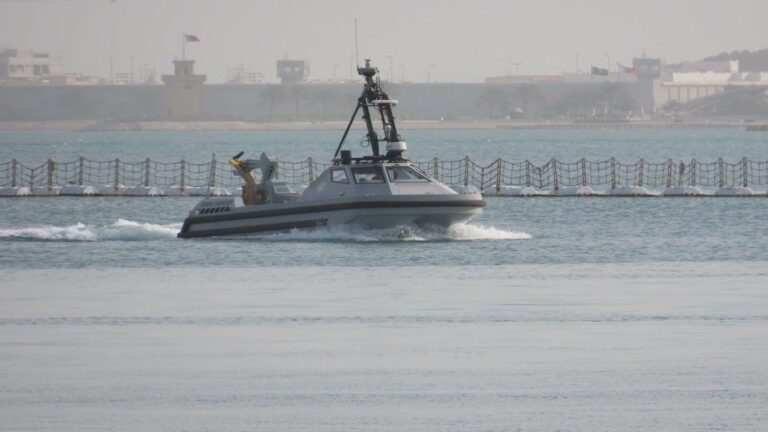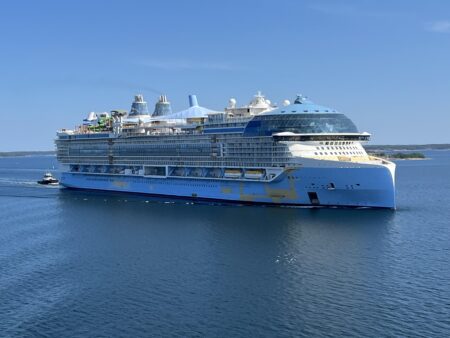Japan has successfully tested its latest unmanned mine hunter vessel, marking a significant advancement in the country’s maritime defense capabilities. The remotely operated craft, designed to detect and neutralize underwater mines, was put through rigorous trials demonstrating enhanced precision and operational efficiency. This development reflects Japan’s ongoing investment in cutting-edge naval technology amid growing regional security challenges.
Japan Advances Naval Security with Successful Unmanned Mine Hunter Trial
The recent trial marks a significant milestone in Japan’s push toward modernizing its naval capabilities through autonomous technology. The unmanned mine hunter demonstrated exceptional precision and efficiency in detecting and neutralizing underwater threats, operating without direct human intervention. This advancement is expected to drastically reduce risks to personnel and increase operational readiness in mine-infested waters around strategic maritime zones. The trial also showcased the seamless integration of AI-driven sensors and remote communication systems, ensuring real-time data exchange with command units onshore.
Key features of the unmanned mine hunter include:
- Advanced sonar arrays for precise mine detection
- AI-powered navigation enabling autonomous maneuvering in complex underwater terrains
- Remote mine disposal mechanisms minimizing crew exposure
- Durable, lightweight design suited for extended missions
| Capability | Performance | Impact |
|---|---|---|
| Detection Range | Up to 500 meters | Early threat identification |
| Operational Duration | 24+ hours | Extended mission coverage |
| Response Time | Less than 5 minutes | Swift mine neutralization |
Technical Innovations Behind Japan’s Autonomous Mine Detection Technology
At the heart of Japan’s groundbreaking autonomous mine detection technology lies a sophisticated integration of cutting-edge artificial intelligence and advanced sensor arrays. Utilizing a combination of LIDAR, sonar imaging, and ground-penetrating radar (GPR), the unmanned vehicle is capable of mapping complex underwater terrains with unprecedented accuracy. The AI algorithms analyze this multi-sensor data in real-time to distinguish between marine debris and explosive devices, dramatically reducing false positives and enhancing operational safety. This situational awareness is further enhanced by adaptive machine learning models that continuously improve the system’s detection capabilities from each mission, allowing for smarter, faster decision-making in dynamic environments.
The system’s autonomy is bolstered by an innovative propulsion design and energy-efficient architecture, enabling extended missions without human intervention. Its modular payload allows for rapid customization depending on the mine types or environmental challenges encountered, making it a versatile asset for maritime security. The following table summarizes the key technical features driving this innovation:
| Feature | Specification | Benefit |
|---|---|---|
| Sensor Suite | LIDAR, Sonar, GPR | High-resolution detection & classification |
| AI Processing | Real-time ML Algorithms | Reduced false alarms, enhanced accuracy |
| Propulsion | Electric thrusters | Quiet operation & energy efficiency |
| Modular Payload | Interchangeable sensor modules | Mission adaptability |
Strategic Implications and Future Deployment Recommendations for Japan’s Mine Countermeasures
The successful trial of Japan’s unmanned mine hunter marks a pivotal advancement in maritime security strategy, particularly in safeguarding vital sea lanes amid rising regional tensions. The integration of autonomous systems into mine countermeasure operations offers enhanced operational flexibility, reduces risk to human personnel, and accelerates response times in conflict or peacetime clearance missions. Japanese defense planners are expected to emphasize the synergistic deployment of these systems alongside existing manned vessels, maximizing situational awareness through networked sensor data sharing.
Key Deployment Recommendations:
- Prioritize coastal defense zones with high commercial and military traffic for initial field deployment.
- Develop joint training programs with allied navies to standardize operational protocols for unmanned systems.
- Invest in continuous software upgrades for autonomous threat recognition and adaptive routing capabilities.
- Expand modular payload options to enable rapid mission reconfiguration depending on tactical needs.
| Capability | Current Status | Future Enhancement |
|---|---|---|
| Autonomous Navigation | Accurate in mapped zones | Full oceanic adaptability |
| Threat Detection | High-frequency sonar active | AI-enhanced classification |
| Communication | – Summarize the key points |




